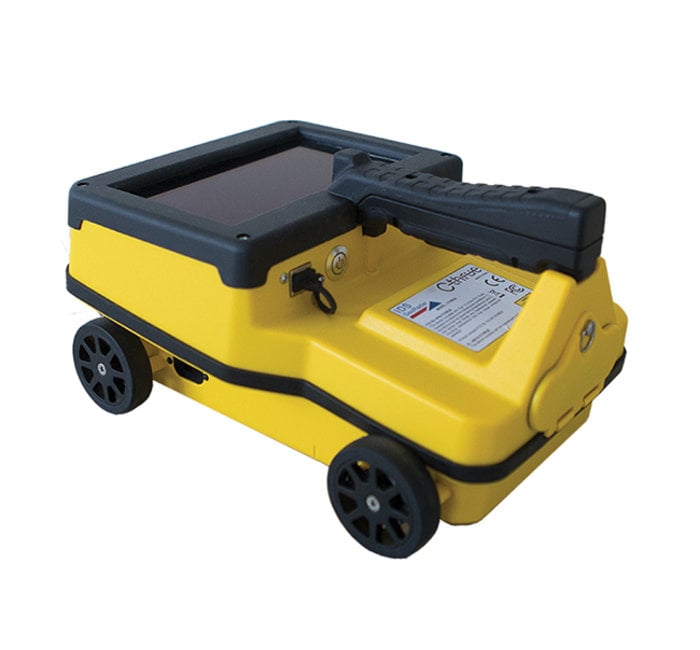Concrete Scanning: A Crucial Action In The Direction Of Making Sure Structural Stability and Safety
In the realm of building and construction and framework upkeep, the significance of concrete scanning can not be overstated. This meticulous process holds the crucial to unveiling prospective dangers concealed below the surface of relatively solid frameworks. By using advanced innovation and approaches, concrete scanning acts as an essential device in making sure that the stability and safety of bridges and buildings are supported to the highest possible requirements. However, past its surface-level ramifications, the role of concrete scanning expands much deeper than fulfills the eye.
Importance of Concrete Scanning
Concrete scanning plays an essential duty in guaranteeing the architectural honesty and safety of buildings and infrastructure projects. By making use of advanced innovations such as ground-penetrating radar (GPR) and electro-magnetic induction, professionals can non-destructively examine concrete structures to detect prospective flaws, gaps, embedded objects, and reinforcement design. This procedure makes it possible for early detection of abnormalities that can compromise the security of a framework, preventing costly damages and ensuring the safety and security of residents.
Concrete scanning is specifically crucial during the planning and building and construction phases of a job. Before boring, reducing, or coring right into concrete, scanning assists determine the exact locations of rebar, post-tension wires, and other ingrained aspects, reducing the danger of accidental hits that can lead to structural weak points. Additionally, concrete scanning aids in quality assurance by confirming the thickness of concrete covers and discovering any type of inconsistencies that may affect the overall durability of the structure. Inevitably, purchasing concrete scanning solutions is not just an aggressive measure to reduce threats but likewise a fundamental step towards maintaining the lasting security and stability of buildings and facilities.
Technology for Concrete Assessment

Advantages of Early Discovery
Prompt discovery of architectural issues can dramatically alleviate risks and guarantee the longevity of building and construction projects. By identifying prospective troubles beforehand in the building and construction procedure, stakeholders can take aggressive actions to deal with issues before they escalate right into larger and extra pricey issues. Among the essential benefits of early discovery is the avoidance of architectural failures, which can posture significant safety risks and lead to job delays and monetary losses.
Additionally, early detection enables timely repair work and upkeep, which can help expand the lifespan of the framework. By addressing concerns promptly, building teams can avoid expensive repair work or also the requirement for early replacement of architectural components. This proactive strategy not just conserves time and money but likewise boosts the general security and sturdiness of the building and construction task.
Furthermore, very early discovery can boost task planning and decision-making by providing stakeholders with useful understandings into the problem of the framework. Equipped with this info, task managers can make enlightened choices pertaining to building and construction methods, timelines, and materials, resulting in much more efficient and successful task end results.
Making Sure Architectural Stability
Guaranteeing the architectural security of a building and construction project is vital to its safety and durability. Architectural security refers to the capability of a building or infrastructure to maintain its type and feature under numerous loads and environmental problems. To accomplish this, extensive assessment and tracking of the framework are essential. Concrete scanning plays an important function in making certain architectural security by detecting potential issues such as spaces, delamination, or support rust that can endanger the honesty of the framework over time.
By making use of innovative scanning technologies like ground-penetrating radar (GPR) and electro-magnetic induction, construction experts can non-invasively check concrete structures to identify locations of problem underneath the surface. This proactive strategy permits the early detection of defects or weak points, making it possible for timely repair work or reinforcement to avoid Visit Website architectural failures.
Regular concrete scanning during various construction stages and throughout the life cycle of a framework can assist maintain its security, mitigate threats, and make sure the security of occupants. By focusing on architectural stability via concrete scanning, building projects can boost their strength and durability, ultimately adding to higher safety and security and long life.
Preventing Crucial Failings
To secure against devastating events, precise monitoring and positive maintenance are critical in avoiding critical failings address within structural frameworks. Identifying prospective problems prior to they escalate is essential to stop structural failings. Implementing routine assessments, such as concrete scanning, can disclose hidden flaws like gaps, cracks, or corrosion that might endanger the honesty of a structure. By using innovative scanning innovations like Ground Penetrating Radar (GPR) or Concrete X-ray, engineers can non-destructively assess the condition of concrete and determine weak factors that call for support or repair - RainierGPR Service Areas.

Final Thought
In verdict, concrete scanning plays an important duty in making sure architectural integrity and security by making use of advanced innovation for very early detection of prospective issues. This aggressive approach assists avoid crucial failures and ensures the stability of frameworks. It is essential to focus on concrete inspection as a typical method to secure the long life and security of buildings and infrastructure.
Concrete scanning plays a critical role in guaranteeing the architectural stability and safety of buildings and infrastructure projects. In addition, concrete scanning help in top quality control by verifying the useful site thickness of concrete covers and finding any kind of discrepancies that might affect the general resilience of the framework. Concrete scanning plays an important role in making certain structural security by discovering possible problems such as gaps, delamination, or reinforcement deterioration that could jeopardize the integrity of the framework over time.

In final thought, concrete scanning plays an important role in ensuring architectural honesty and security by utilizing sophisticated technology for very early detection of potential concerns.